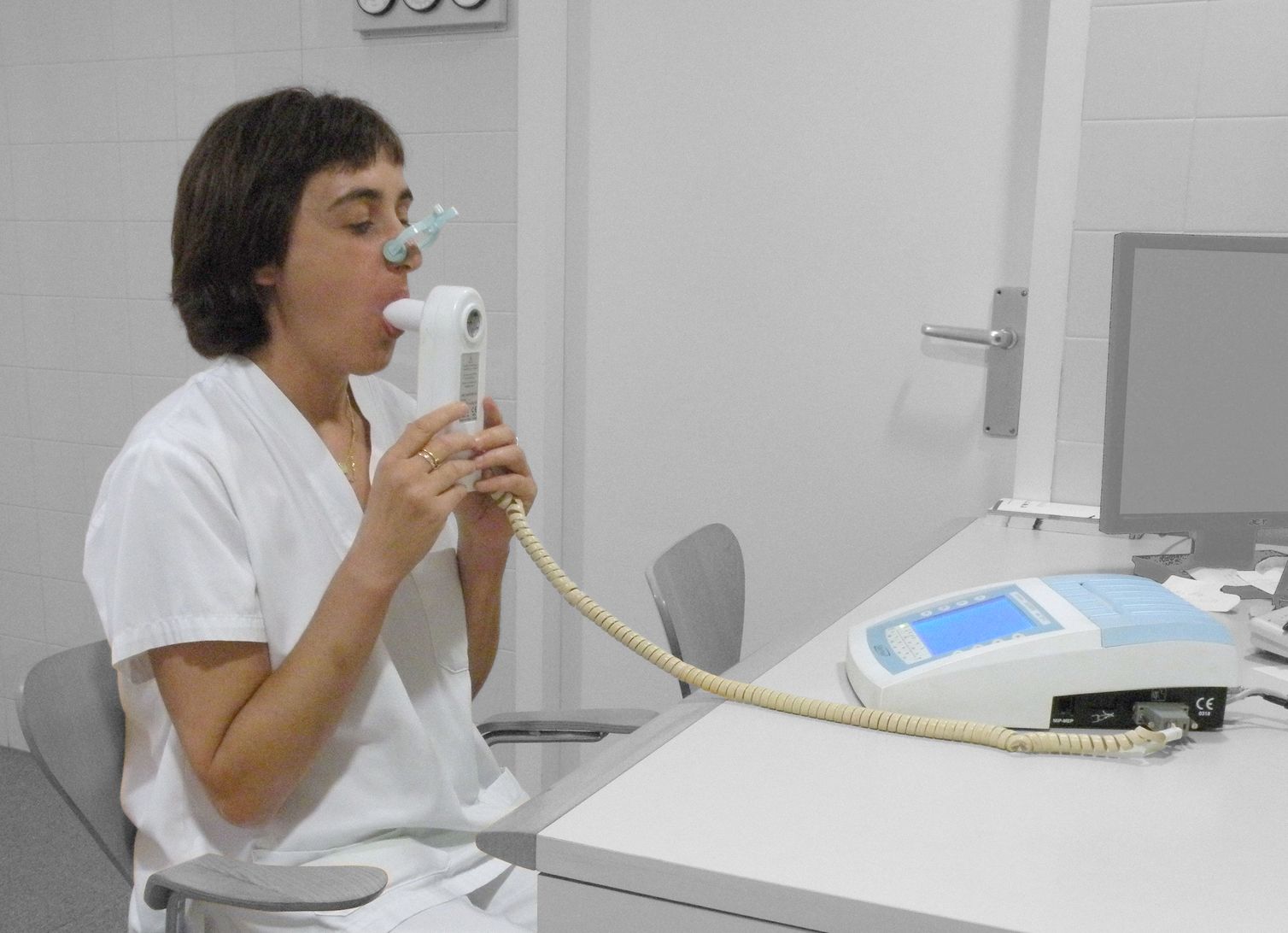Why did my doctor prescribe oxygen for me?
Every body needs oxygen to survive. Every tissue and cell in the body needs a constant supply of oxygen to work properly.
The lungs breathe in oxygen from the air, then passes the oxygen into the bloodstream through millions of tiny air sacs called alveoli. Haemoglobin in the red blood cells then picks up the oxygen and carries it off to the body’s tissues and cells.
Lung disease can cause inflammation and scarring in the alveoli. This inflammation and scarring makes it difficult for oxygen to move into the bloodstream. Therefore, the amount of oxygen in the blood drops, and the body’s tissues and cells don’t receive enough oxygen to keep functioning properly. Not enough oxygen in the bloodstream is called hypoxaemia.
Many diseases affect lung capacity and breathing and if your disease has progressed to a point where breathing is becoming increasingly difficult and you’re suffering from hypoxaemia then your doctor may decide to start you with a prescription for supplemental oxygen.
How did my doctor determine that I need supplemental oxygen?
This will be determined by measuring the levels of oxygen in your blood. The amount of oxygen in the bloodstream can be easily measured in two ways:
-
Oximetry — A small, clip-on device shines a light through your finger or earlobe and measures the amount of light absorbed by the haemoglobin in the red blood cells. By calculating the amount of light absorption, the device can measure the percent of haemoglobin that is carrying oxygen, this result is known as the oxygen saturation of the blood. Normally this is around 95 to 100 percent.
-
Arterial blood gas study — Blood is drawn from an artery, usually in the wrist, using a needle and syringe. The blood is then sent through an analyser to measure the amount of oxygen gas dissolved in the blood. This result is called the arterial oxygen pressure, and is normally 80 to 100 mm Hg.
Cells and tissues cannot save up a store of oxygen, they need a constant steady supply. When the oxygen saturation falls below 89 percent, or the arterial oxygen pressure falls below 60 mmHg, whether during rest, activity or sleep, then supplemental oxygen is needed.
Your doctor can determine your supplemental oxygen needs by testing you while you are at rest and while walking, and can also order an overnight oximetry study to test your oxygen saturation at night.
When and how often do I have to wear my oxygen?
Your doctor will write a prescription for when and how much you should wear your oxygen, based on the results of your tests. The prescription should specify the following:
-
The appropriate oxygen flow rate or setting, expressed as litre flow of oxygen per minute that will keep your saturations at or above 90 percent
-
When you should wear your oxygen (during activity, overnight or continuously)
-
The type of equipment that you can use that will meet your lifestyle needs.
Why would I need to wear oxygen while sleeping?
Oxygen levels in the blood are naturally lower during sleep, due to a slightly reduced breathing rate and a reduced requirement by your body for oxygen. Also, some alveoli drop out of use during sleep. You naturally have a lower rate, however if your levels are already low as a result of your condition then they may faller dangerously lower during sleep.
If your waking oxygen saturation is greater than about 94 percent on room air, it is unlikely that your saturation during sleep will fall below 88 percent. However, your doctor can order an overnight pulse oximetry test if there is a question about your oxygen levels while you are sleeping.
How do I know that I’m using the right amount of supplemental oxygen?
To determine this your oxygen saturation must be measured while you are using your oxygen. Your doctor or a respiratory therapist from the oxygen supplier should test your oxygen saturation on oxygen while you are at rest, while walking and, if indicated, while you are asleep. As long as your oxygen saturation is in the 90s, you are getting the right amount.
Should I buy my own finger oximeter to test my oxygen saturations?
Some people feel more comfortable testing their own oxygen saturation throughout the day or during various activities, to make sure they are at least 90 percent saturated.
Finger oximeters are available on the Internet, through medical supply companies and even in sporting goods stores. They can be expensive however and have not been adequately tested for accuracy. You can speak with your doctor who can determine if a finger oximeter is necessary.
How will using supplemental oxygen benefit me?
A lack of oxygen to the body can result in damage to your organs, especially the brain, heart and kidneys. Wearing supplemental oxygen keeps these organs healthy. There is evidence that, for people who are hypoxaemic, supplemental oxygen improves quality of life and survival time.
Supplemental oxygen can also help relieve any symptoms from your disease. It can help relieve you from shortness of breath, fatigue, dizziness and depression. You may also be more alert, sleep better and be in a generally better mood. You may be able to do more activities such as travelling and generally feeling more mobile and able to get around and take part in hobbies.
Does my need for oxygen mean that I don’t have long to live?
People live for years using supplemental oxygen but it will depend upon the progression of your disease and other complicating factors.
How long will I need to use supplemental oxygen?
That depends on the reason oxygen was prescribed. If your lung or heart condition improves, and your blood oxygen levels return to normal ranges without supplemental oxygen, then you don’t need it anymore.
Can I become addicted to oxygen?
There is no such thing as becoming “dependent on” or “addicted to” supplemental oxygen, everybody needs a constant supply of oxygen to live. Your haemoglobin or cells wont adapt or structurally change in response to a constant higher supply of oxygen. They just use whatever oxygen is available to them.
Does supplemental oxygen cause side effects?
It is important to wear your oxygen as your doctor ordered it. If you start to experience headaches, confusion or increased sleepiness after you start using supplemental oxygen, you might be getting too much and need it to be altered.
Oxygen settings of 4 litres per minute or above can cause dryness and bleeding of the lining of the nose. A humidifier attached to your oxygen equipment or certain ointments can help prevent or treat the dryness.





